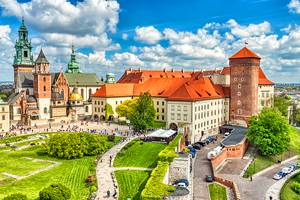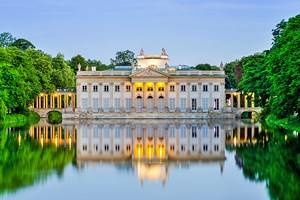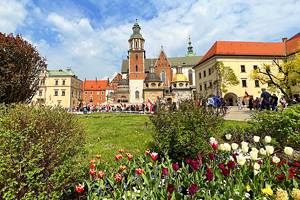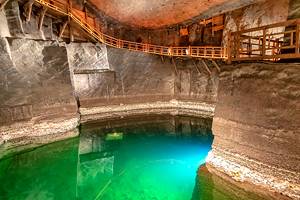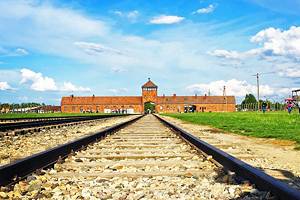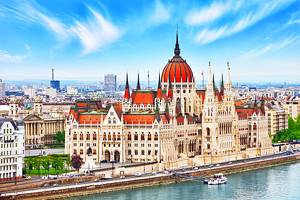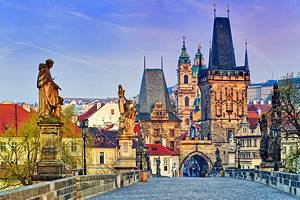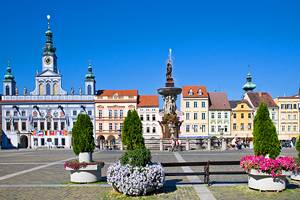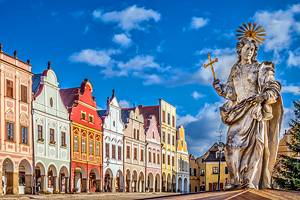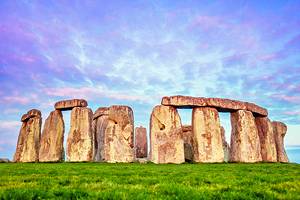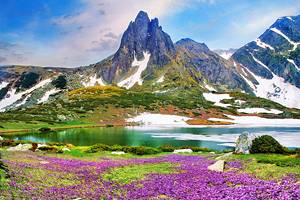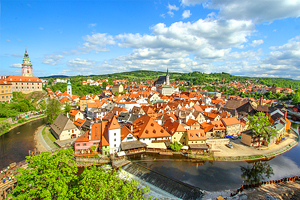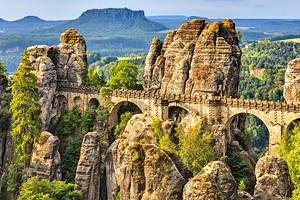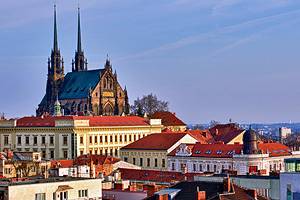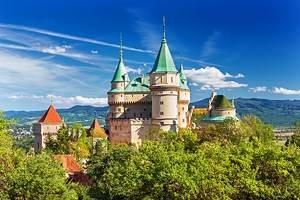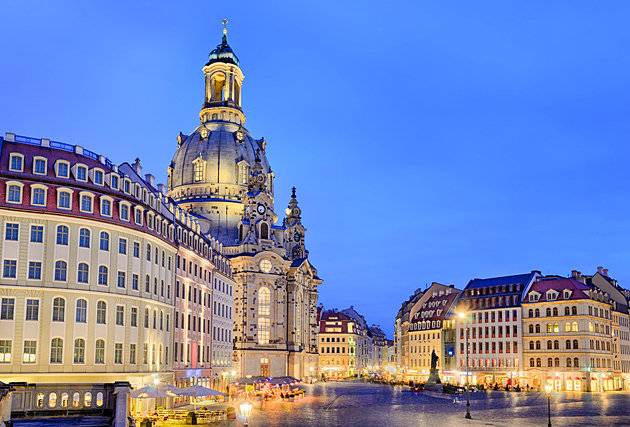Things to Do in Poland
Poland is filled with must-see destinations and things to do. One of the most popular countries to visit in Eastern Europe, Poland offers not only great sightseeing but also lots of historical locations, fun markets, great outdoor destinations, and plenty of fun cuisine.
Even better, some of the best places to visit in Poland are outside the biggest cities, so you'll get a chance to experience the true spirit of the country as you enjoy the seaside and climb some of Europe's mightier mountains.
Wherever your interests lie, read our list to find plenty of things to do in Poland.
Go Underground into the Wieliczka Salt Mine
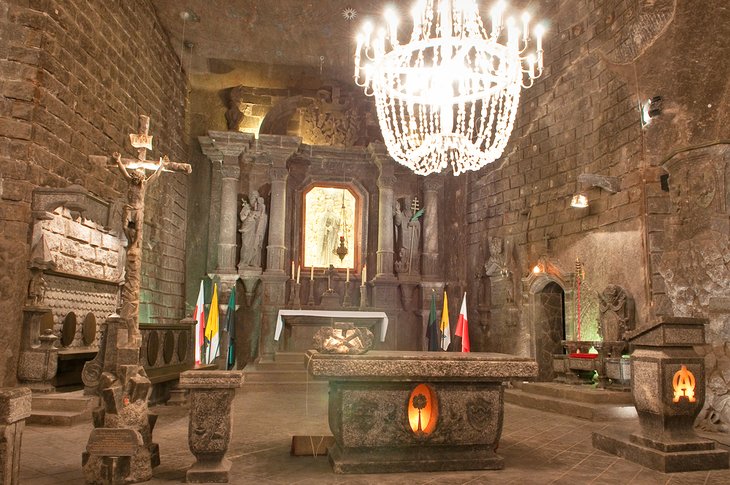
Active from the 13th century until 2007, the Wieliczka Salt Mine (affectionately known as "the Underground Salt Cathedral of Poland") offers an amazing look back at the history of salt mining. Today, visiting the salt mines on a day trip is one of the top things to do in Krakow, and walking the seemingly unending underground passageways and shafts to learn about the history of mining is just the beginning of the fun here.
There are over 300 kilometers of subterranean galleries connected by stairs, walkways, and ramps here, but the main tourist attraction at the mine is the four chapels, and especially the central Chapel of St. Kinga, where the murals on the walls and even the stunning chandeliers hanging from the high ceilings are sculpted from rock salt.
Read More: From Krakow to Wieliczka Salt Mines: Ways to Get There
Learn about the Holocaust at Auschwitz-Birkenau Memorial
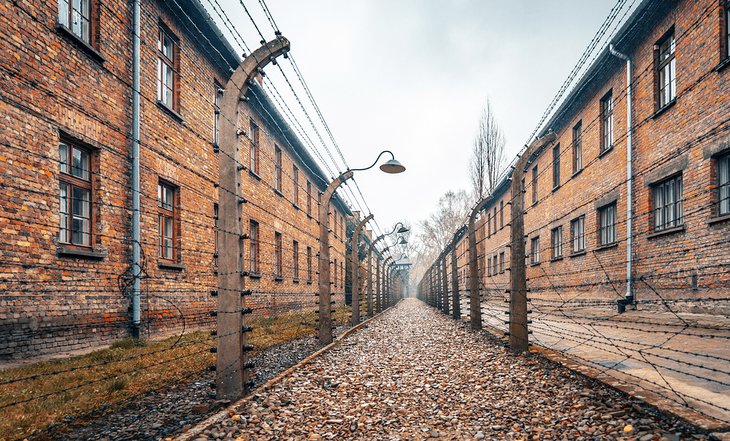
What was once the largest of all the Nazi German concentration camps is now a World Heritage Site and museum memorial that consists of two sites: the main camp at Auschwitz I and the ruins and remains at Auschwitz II-Birkenau, located about 3.5 kilometers from each other (museum shuttle buses are available to connect both camps).
Birkenau was continuously expanding during the war, and by the time Soviet Forces started to close in during 1944, the grounds occupied over 420 acres with over 300 buildings.
In an attempt to hide the atrocities committed at the camp, the gas chambers, crematoria, and a number of other buildings were destroyed in 1944 before the Nazis abandoned the camps. Today, you can see the ruins of the destroyed chambers, as well as camp barbwire fences and the railroad spur ("ramp") that trains carrying prisoners would use to enter the camp.
You can also walk into many of the still-standing buildings, including the ones used for human experiments, the ones where the SS offices were located, and the primitive wooden barracks where prisoners slept. Most have been transformed into memorials to document the lives of the 1.1 million people who died here.
Read More: From Krakow to Auschwitz: Ways to Get There
Explore Krakow's Old Market Square
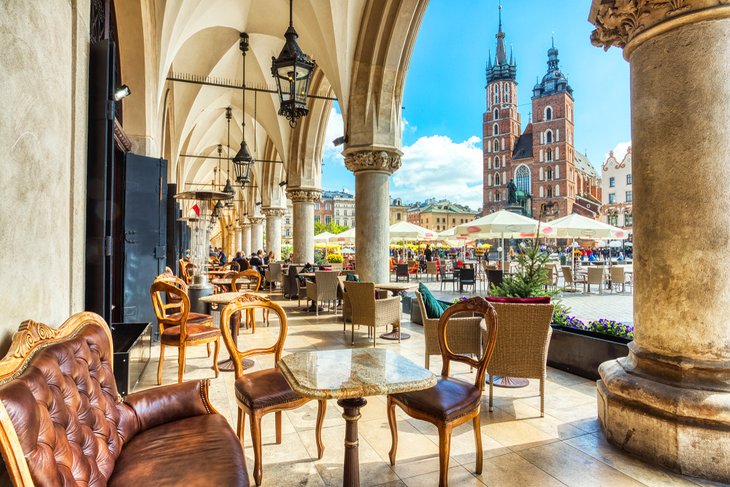
Europe's largest medieval town square dates back to the 13th century. It was one of the few major European squares not bombed during WW2, which means the medieval halls and townhouses you see today look almost the same as they did centuries ago.
The star of the square is the Cloth Hall, a market that started life in the 14th century and where you can still get original handicrafts (pick between amber, wood, or glass). The same building also hosts a city museum and a gallery dedicated to 19th-century art.
The St. Mary's Basilica and the Town Hall Tower (climb to the top for great views over the square) are also worth a visit.
Every July, the ULICA Street Theater Festival takes over the square for a series of stunning, colorful performances.
Step into Malbork, the World's Largest Medieval Castle
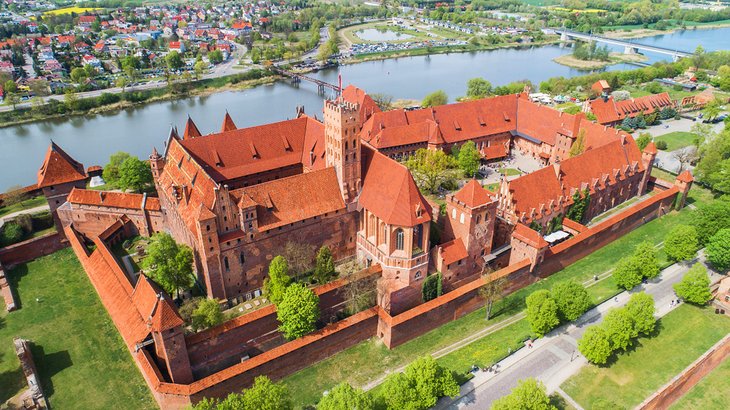
Although it started life as a fortress, when Malbork castle was completed in the early 1400s for the Teutonic Knights crusaders, it was the largest castle in the world built entirely of brick. It still remains the world's largest castle by land area.
For a long time, Malbork served as a powerful religious and military center, but it eventually started to decline and was then seriously damaged during WWII. It took almost three decades of hard work and non-stop renovations before Malbork recovered its stunning Gothic look and was almost immediately after designated a UNESCO World Heritage Site.
Today, tours of the castle will take you through tapestry rooms, expansive courtyards, and an impressive ancient kitchen.
Visit the Real Schindler's Factory
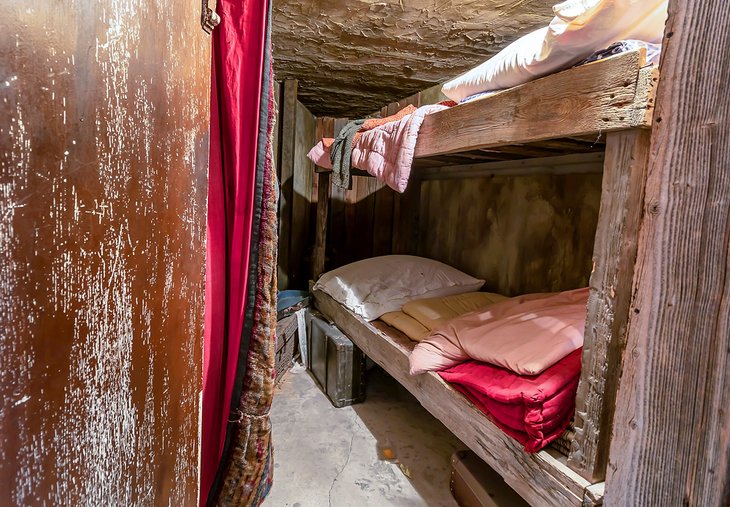
Oskar Schindler's former enamel factory still stands in Krakow. As shown in Steven Spielberg's Schindler's List movie, the factory was the cover Schindler used to save the life of 1,200 Jews during WWII.
As the factory switched from producing enamel to ammunition shells, it also became a refuge for Jews that would have otherwise been sent to concentration camps.
Today, the factory houses two museums: the Museum of Contemporary Art and the Historical Museum of the City of Kraków.
What was once the working factory floor is now home to a permanent exhibit on what life was like in Krakow during the Nazi occupation. It showcases everyday objects, examples of the products made at the factory, documents, and historical photographs.
Walk into the Surreal Crooked Forest
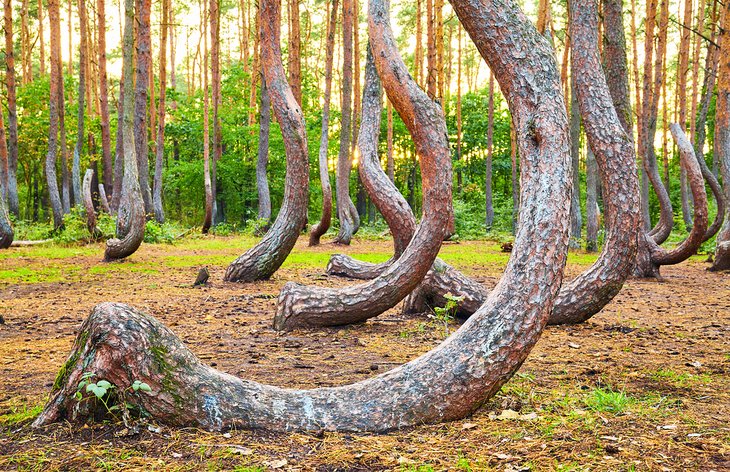
Located in a tiny village in northwestern Poland, the Crooked Forest lives up to its name and the mystery surrounding it.
Walk into a normal forest of perfectly straight pine trees, and you'll eventually run into a group of about 400 bent trees. All tree trunks are bent sharply on a sort of U just above ground level, with the trunks straightening up soon after. The trees were discovered in the forest in the 1930s, and there's never been a clear explanation of why they look that way.
One of the most commonly accepted theories is that they were "modified" using tools, so the bent wood could be used in boat or furniture construction. But this doesn't explain why the trees are still there or how exactly this was accomplished.
Nevertheless, the crooked forest makes for a stunning photo opportunity and a great place to explore.
Canoe in the Masuria Lake District
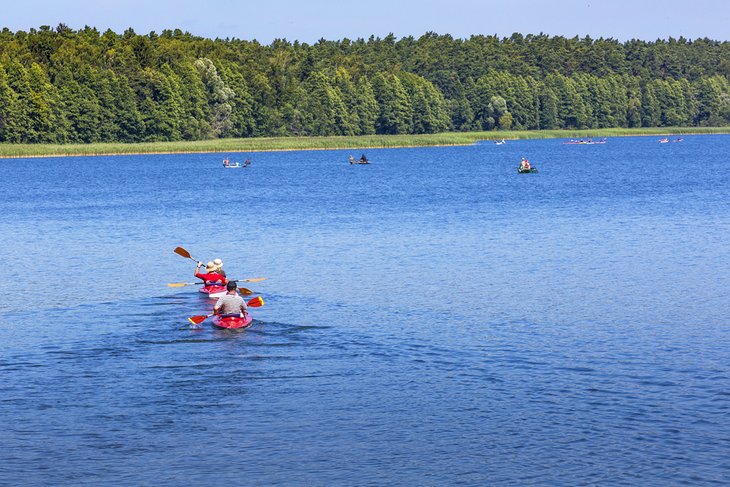
Home to over 2,000 lakes and a system of rivers and canals connecting them, this area in northeastern Poland attracts water lovers from all over Europe. Visitors come here to canoe the beautiful blue waters, swim, and sail.
Poland's largest lake, Lake Śniardwy, is located here, and it's a popular place to visit for boating and canoeing in the summer.
But the Masuria Lake District is about more than beautiful lakes. Rolling hills surround the water, and offer plenty of opportunities to explore organic farms, charming little towns, and thick forests waiting to be hiked.
Wolfschanze (Wolf's Lair), Hitler's hidden headquarters during WWII, is also in the forest, if you're up for the hike to it.
Hike in the Tatra Mountains
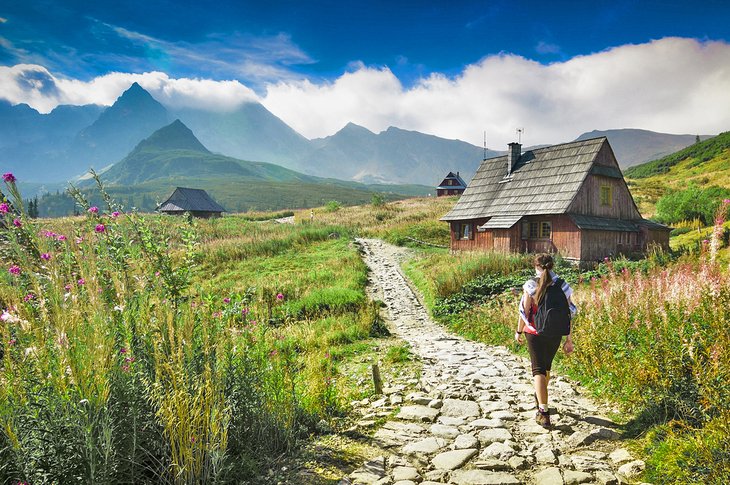
The Tatras Mountain range runs along the border between Slovakia and Poland, a mighty area that covers almost 800 square kilometers. Snow-covered peaks attract cross-country skiers during the winter months, but the main reason to visit is, without a doubt, the many trails.
Experienced hikers from all over Europe come here to try the Orla Perć trail, considered the most difficult path in the Tatras and one of the most dangerous hiking trails in Europe.
There are plenty of more accessible trails cutting through valleys, around crystalline lakes, and past caves and picturesque villages.
Climb the Sand Dunes in the Slowinski National Park
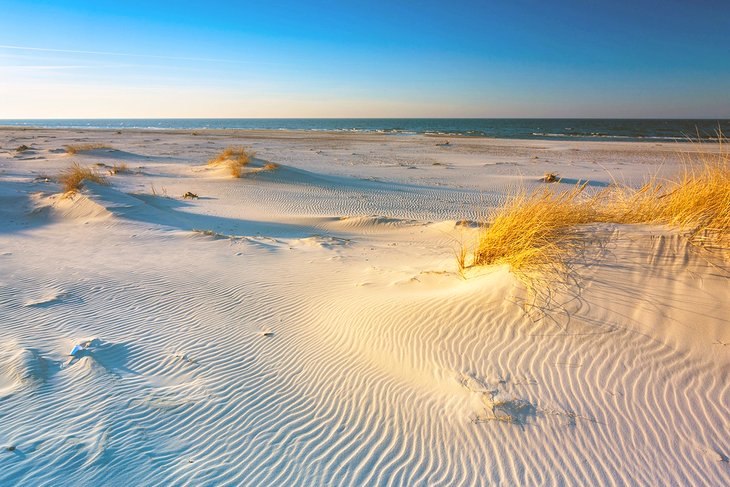
Located on the Baltic Coast, Slowinski National Park encompasses over 32 kilometers of beautiful coastline. Although the park also features forests, meadows, and lakes, it is more famous for its moving dunes.
Wind and waves hitting the shoreline have caused a unique phenomenon, in which the dunes on the beach actually move up to 10 meters per year. If you stick around long enough during the day, you can almost see them dancing their way across the beach.
Hike to the top of the highest dunes (about 30 meters tall) for great views over the park and the desert-like space around you.
Over 140 kilometers of walking trails crisscross through the park, offering great opportunities for bird-watching.
See European Bison in the Bialowieza Forest
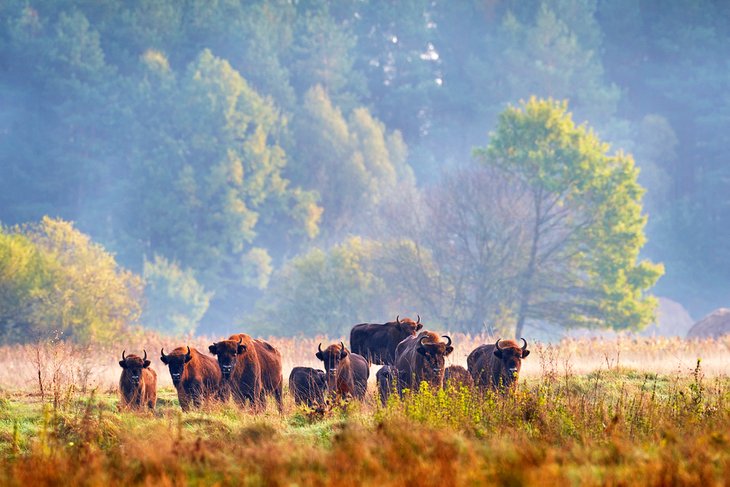
Located on the border between Poland and Belarus, the forest occupies over 3,000 square kilometers and is over 450 years old – the last remaining area of primeval forest in Europe. One of the few natural places in the world designated as a UNESCO World Heritage Site, the forest is especially famous for being home to 800 bison, Europe's largest mammal.
Located about 3.5 hours away from Warsaw, the forest offers the best opportunities for biking, Nordic walking, hiking, and animal watching between May and October, when the weather is mild and the roads are clear of ice and snow.
One of the best walks is the Zebra Zubra wooden plank trail that takes you through the swamp area of the forest. Guided tours are available to help you improve your chances of seeing the animals and learn more about the park.
Soak Up the Summer Sun at the Isle of Usedom
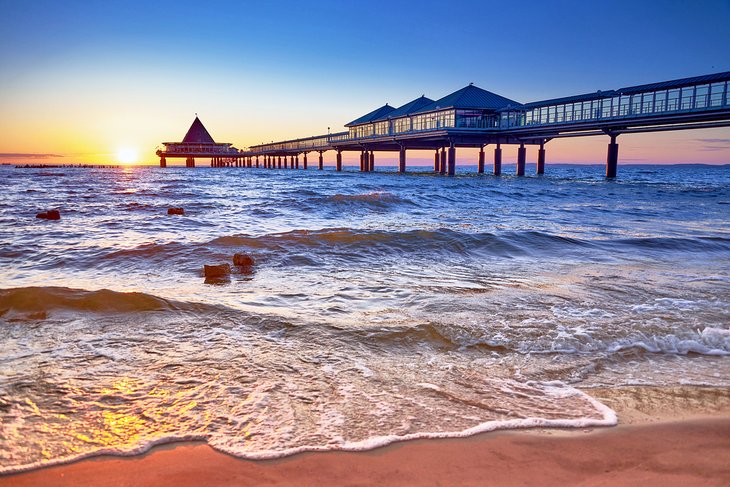
A Baltic Sea island divided into Germany and Poland, Usedom is a stunning, sunny destination with a wide shoreline that seems to go on forever. There are stretches of soft golden beaches for everybody here: dog owners, families, and those looking for a peaceful holiday or a chance to try water sports.
Usedom embodies everything you might expect from a beach resort destination. There are charming little bed and breakfasts, a large covered pier with great views over the water, and cozy cafés serving homemade ice cream.
The best part? You can walk from one end of the island to the other and actually visit two countries. On the German side, you'll find a stretch of land featuring the famous Strandkorb, a "hooded" chair that offers shelter from winds and sun.
Explore the Food Markets in Krakow

Krakow is Poland's best place to visit for foodies – and not only because of its great restaurants. In fact, the best place to get to know Polish cuisine is at the city's many hala (food halls). If you're looking for a foodie holiday, this is the place to come.
Hala Koszyki is the best one of all. It houses 18 restaurants, as well as grocery stores and food stalls serving high-end food. Famous chefs, multi-national cuisine, and great desserts await. Grab a plate of pierogi (filled with mushrooms, cheese, or jam) or golabki (cabbage rolls), find a place to sit, and enjoy.
Hala Mirowskie is more about fresh foods and small vendors than restaurants. You'll find everything from homemade jam to wild-picked blueberries to fresh pastries (search for pączki or jam-filled donuts) here. Some of these make for unique souvenirs as well.
Go Skiing in Zakopane
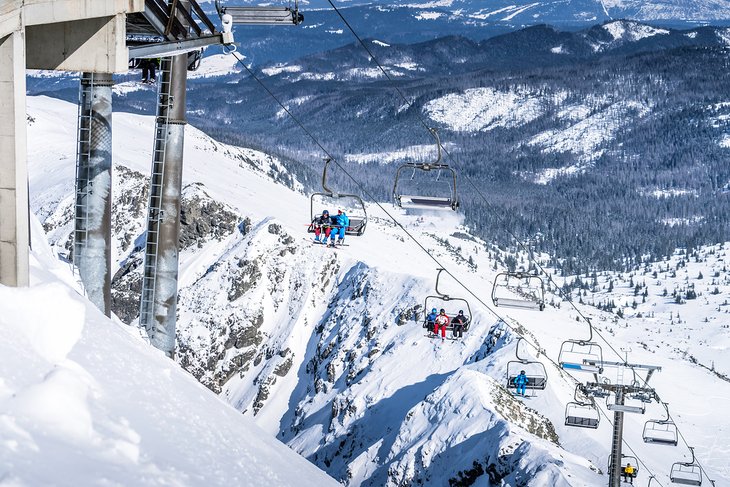
Located at the foot of the Tatra Mountains, the town of Zakopane is Poland's best snow destination.
Zakopane is close to the two major skiing destinations in Poland: Kasprowy Wierch peak and Gubałówka mountain (which can be reached via the Butorowy Wierch chairlift).
Both beginners and advanced skiers can enjoy a world-class skiing and snowboarding experience here, with views over the stunning landscape around. The Nosal and Harenda ski stations are perfect for beginners, with blue and green pistes and a ski school available, while the Szymoszkowa ski station also has great intermediate pistes.
Kasprowy Wierch offers a stunning five-kilometer descent for advanced skiers. With an altitude of over 1,980 meters (the views are stunning from the gondola going up the mountain), it provides enough challenges to keep you busy for hours.
Travel Back in Time at Wroclaw's Market Square
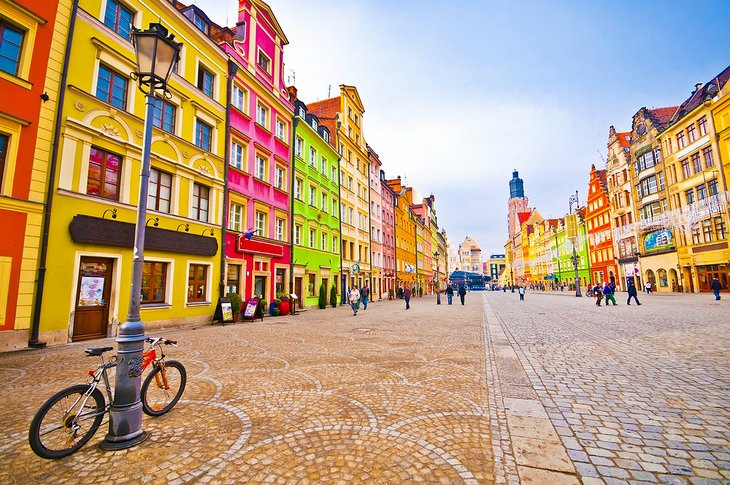
Wroclaw is one of the oldest cities in Poland, dating back over a thousand years. Technically speaking, it was only returned to Poland in 1945 after years of being part of Austria, Hungary, the Kingdom of Prussia, and Germany.
Today, the square is the heart of the city, with eleven different streets branching out from it. It was built in the early 1200s, with new buildings and colorful tenement houses added over the following centuries.
Some of the most stunning ones still here include the Świdnicka Cellar (open since medieval times, it is one of the oldest restaurants in Europe) and the two Town Halls, but there are also plenty of cafés and shops here worth a visit.


